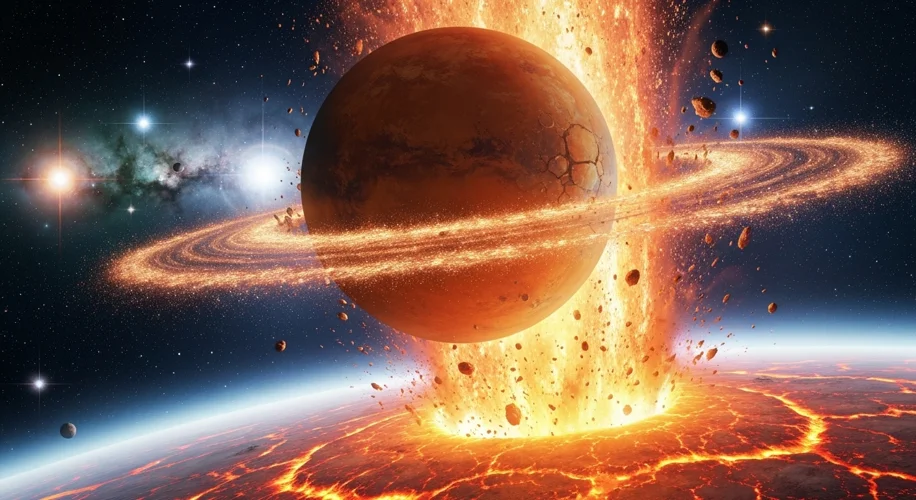Imagine a time before the familiar blue marble of Earth graced the cosmos. A time when our planet was a nascent world, still finding its footing in the chaotic dance of the early solar system. Now, picture a rival – a celestial body, perhaps as large as Mars, hurtling through the void on a collision course with our very own cradle of life. This wasn’t a distant, abstract event; it was a cataclysmic impact, a cosmic embrace that, paradoxically, may have set the stage for the vibrant tapestry of life we know today.
For decades, scientists have grappled with the enduring mystery of our Moon’s formation. The prevailing theory, known as the Giant-Impact Hypothesis, suggests that in the fiery dawn of our solar system, around 4.5 billion years ago, a Mars-sized protoplanet, often referred to as Theia, slammed into the proto-Earth. This wasn’t a glancing blow; it was a cataclysm of unimaginable proportions. The sheer force of the impact vaporized vast portions of both celestial bodies, spewing molten rock and debris into orbit around Earth.

This ejected material, over time, coalesced under its own gravity, eventually forming the Moon. But the consequences of this monumental impact reached far beyond the creation of our celestial companion. The intense heat generated by the collision would have sterilized the surface, rendering it a hellish inferno of molten rock. Yet, it is within this very violence that clues to Earth’s later habitability might be found.
New studies, leveraging sophisticated simulations and refined geological data, are lending further credence to the idea that this ancient impact was not just an event of destruction, but a crucial step in Earth’s evolutionary journey. The sheer energy released by the collision is thought to have melted the planet’s crust and mantle, leading to a period of intense volcanic activity and a global magma ocean. This churning, fiery sea played a vital role in separating the early Earth into distinct layers: the dense metallic core, the silicate mantle, and the lighter crust.
Furthermore, the impact could have delivered a significant portion of Earth’s volatile elements, including water, which are essential for life as we know it. While early Earth was likely too hot to retain much water immediately after the impact, the subsequent cooling and outgassing from volcanoes, fueled by the residual heat from the collision, released these trapped volatiles, eventually forming our oceans.
Consider the delicate balance required for life to emerge and thrive. It needs liquid water, a stable atmosphere, a protective magnetic field, and a moderate temperature range. The giant impact, in a twisted sense, contributed to many of these conditions. The formation of the Moon, with its gravitational influence, is crucial for stabilizing Earth’s axial tilt, preventing wild swings in climate that could have been detrimental to life. The molten core, a legacy of the impact’s heat, generates the magnetic field that shields us from harmful solar radiation.
Scientists are also exploring how the impact might have influenced the very composition of our planet. The precise nature of Theia – its size, density, and chemical makeup – could have seeded Earth with specific elements or isotopes that proved advantageous for the genesis of life. For instance, the isotopic composition of lunar rocks, strikingly similar to Earth’s mantle, supports the idea that much of the Moon’s material originated from our planet, but subtle differences still hint at Theia’s contribution.
This hypothesis challenges our intuitive understanding of catastrophic events. Often, we associate such violence with annihilation. Yet, in the grand theater of cosmic evolution, a cataclysmic collision billions of years ago may have been the very catalyst that nudged Earth toward becoming a habitable world. It’s a profound reminder that even in the most destructive moments, the seeds of creation can be sown, leading to outcomes far more wondrous than we might initially imagine.

